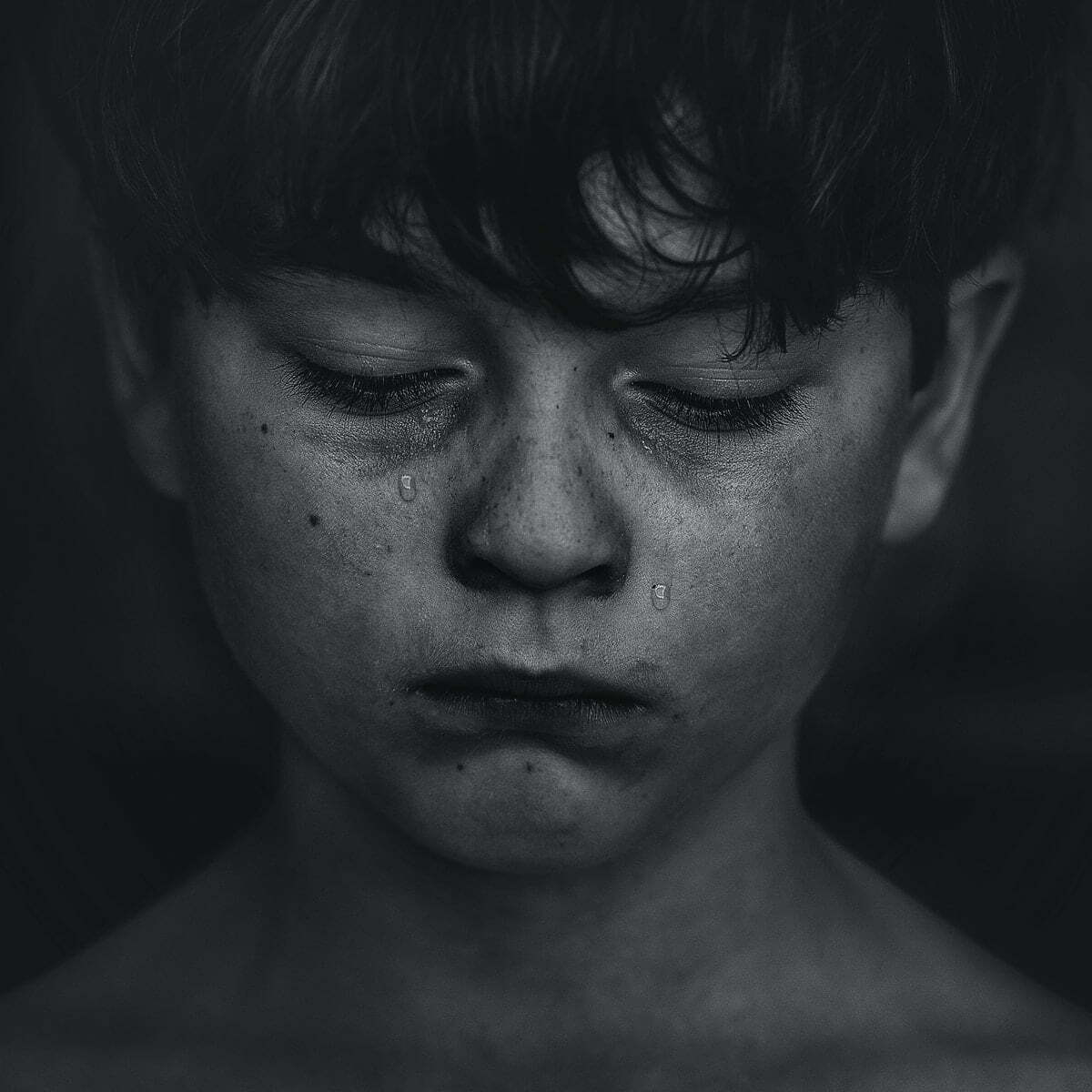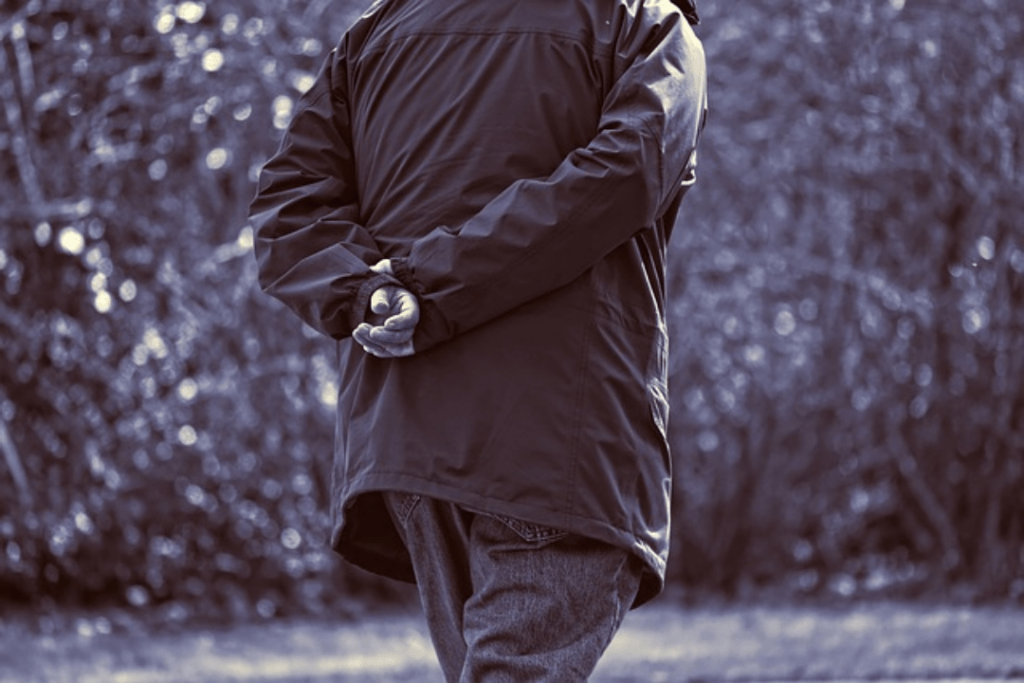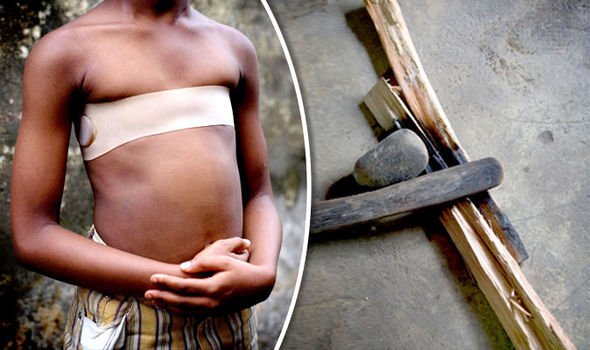Within the space of two weeks at the end of May, there were two separate convictions for Forced Marriage within the UK. Both received widespread national media attention. The reason for this was that the first case was referred to as a “landmark case, a “first ever conviction”. The second case attracted similar attention, being described widely as the “second force marriage conviction in a week”. In the first case , a woman was convicted of taking her teenage daughter to Pakistan and forcing her to marry a man 16 years her senior. In the second, a mother and father were convicted of tricking their 19-year old daughter to go to Bangladesh to marry a cousin, against her will.
Following both convictions, Criminal Prosecution Service (CPS) spokespersons from Birmingham and Leeds released similar statements to the press. In both the CPS rightly praised the courage of the victims in providing evidence of their ordeals. They also took the opportunity to highlight the gravity of the offence, one which they said they take very seriously. In Birmingham the spokesperson said, “as this prosecution demonstrates, the CPS will work with partner agencies to identify and prosecute those who coerce, control, dominate or exploit a victim to force them into marriage”. In Leeds the CPS said, “this successful prosecution sends a clear message that forced marriage is a very serious crime and those responsible will be prosecuted”.
However, whilst there was nothing wrong with this flag waving from the CPS, the media headlines raised one very overwhelming question. Why were these the first convictions for forced marriage in the UK, since it was made a criminal offence in 2014?
In 2017 the defendant took her 17-year old daughter to Pakistan on the pretext that they were going on a family holiday. When they arrived, the victim was informed that as soon as she turned 18 , she was to be married to a 36-year old man. This marriage had been planned for some time and a ‘marriage contract’ had existed between the two families since 2012. When she was 13 the victim had been taken to Pakistan where the intended husband had previously raped her, making her pregnant. On her return to the UK her mother arranged for the pregnancy to be terminated and when the authorities made enquiries , she painted a picture that her daughter and the father were of the same age, two young people acting foolishly.
When the victim indicated that she didn’t want the marriage to go ahead, she was assaulted by her mother and her passport was confiscated. The victim attempted to get help from other family members in the UK but in the name of ‘honour’ her mother ensured that the marriage went ahead. The victim was forced to attend the wedding venue and take part in an Islamic ceremony, without the groom being present. She was forced to sign a marriage certificate confirming the marriage had taken place , before being taken to another venue to meet her husband and wedding guests.
Whilst the mother returned to the UK, the victim was forced to remain in Pakistan, being treated like a slave by her ‘husband’ and his family. The girl was already known to social services in the UK and on her return , the mother was summonsed to appear before the Family Division of the High Court. Lying to the court, the mother stated that the victim had wanted to stay in Pakistan and denied that a marriage had taken place. However, the Judge was not satisfied and made an order for the victim’s immediate return to the UK. Legal proceedings were started and with the assistance of the Foreign Office the victim was eventually brought back to the UK. When interviewed by police and social care, she revealed the true extent of her ordeal and her mother was arrested and charged. The mother was convicted of force marriage and perjury. She was sentenced to 4 ½ year’s imprisonment.
In 2016 the 19-year old victim was taken by her parents to Bangladesh on the pretext of a 6-week family holiday to visit relatives and celebrate Eid. Unbeknown to the victim , there had been in place , a longstanding marriage contract made between her father and the family of the intended groom. She was to marry her cousin, but she refused. Initially her parents attempted gentle persuasion to obtain her consent. However, when this didn’t work they tried to shame her , informing her that if she didn’t go ahead with it , then she would bring disgrace and dishonour upon her family. Threats soon turned to violence and she was beaten by her father, egged on by her mother. She was told that the only way she would ever return to the UK, was if she was to get pregnant immediately after the marriage, otherwise her passport would be burned. Her father also threatened that he would cut her throat and chop her into 18 pieces., one for each year of her life.
With her sisters help , the victim managed to contact the British High Commission in Bangladesh who with the assistance of the UK Forced Marriage Unit and the Bangladeshi police, managed to rescue the victim several days prior to the wedding and return her to the UK. The mother and father were subsequently convicted of Force Marriage at Leeds Crown Court. They are currently awaiting sentence.
Is the reason for the low conviction rate due to the fact that in the UK we don’t have a forced marriage problem? The answer to this is of course, is a resounding “No”. The statistics show that we have a substantial problem and the stats only show the ‘tip of the iceberg’. Charities, non-governmental agencies, law enforcement and government departments all universally agree that the figures do not represent the true scale of the abuse, and that forced marriage is a hidden and massively underreported crime.
In September last year the UN’s International Labour Organisation (ILO) together with the Walk Free Foundation produced the report ‘2017 Global Estimates of Modern Slavery’ which looked at the worldwide modern slavery problem. For the first time they included in their data, the figures relating to forced marriage. They estimated that in 2016 a staggering 15.4 million people were trapped within a forced marriage.
Just what is the extent of Forced Marriage in the UK? For the last month, the Guardian newspaper have published several articles highlighting the issues around forced marriage, also focussing on the low conviction rate. One of their articles relied on the publication of the UK ‘Forced Marriage Unit (FMU) statistics 2017’. The FMU is a joint Foreign and Commonwealth Office and Home Office unit which leads on the Government’s forced marriage policy, providing support to any individual, whether in the UK or overseas. The highlights of the 2017 figures are:
- the FMU gave advice and support in 1,196 cases
- 335 (29.7%) cases involved victims below the age of 18
- 186 involved victims aged 15 or younger
- 8% (930) cases involved female victims
- 4% (256) cases involved male victims
- 10% had no overseas element, meaning that the potential or actual forced marriage took place entirely within the UK
Another Guardian article featured an alternative set of figures obtained from two charities. IKWRO (Iranian and Kurdish Women’s Rights Organisation) revealed that they had identified that between 2014 and 2016 there had been 3,546 reports made to the authorities , whilst in the same period the charity Karma Nirvana had received 22,030 force marriage related calls.
- to preserve and protect perceived cultural or religious norms; to fulfil a sense of duty
- pressure from the extended family or community
- to fulfil long standing family commitments or to strengthen family ties
- to ensure wealth, land or property remain in the extended family or as an assurance against poverty
- to resolve a dispute between families
- to provide one of the parties with British citizenship
- to provide a carer for a family member with a disability
- to control perceived problematic behaviour and to prevent what the family see as ‘unsuitable’ relationships (this may include where the victim is, or they believe the victim is LGBT)
- to deal with an unplanned pregnancy outside of marriage
- widow inheritance (obligation to marry a male relative of late husband)
Forced Marriage should not be confused with arranged marriages which involves the parents or older family members of both spouses taking a leading role in arranging the marriage. However, the choice of whether to accept the arrangement remains with the prospective spouses and therefore is not a criminal offence. Care should be taken when determining if a marriage is forced or arranged as there may be some similarities in the way both are organised. In an arranged marriage where a daughter or son disagrees with the decision, the parents should respect their wishes and seek an alternative match. On occasion a child will not refuse the suitor because they respect and honour the opinion of their parent. Whilst the young person might not be keen on their prospective partner, the marriage is still not forced unless it involves a lack of consent by one or both parties and pressure or coercion is applied by the parent/family. Consenting through fear or pressure is not true consent.
Whilst it is accepted that this is a hidden crime, the FMU figures show that we were still made aware of nearly 1,200 cases last year. Not all of them will ultimately get anywhere near being a substantive criminal offence, but all the same, two convictions in 3 years doesn’t seem to be a great return. So, what is the reason?
Karma Nirvana is a UK charity that supports victims of honour-based abuse and forced marriage. Following the conviction, Founder and Director, Jasvinder Sanghera CBE, was widely quoted in the media and said that there needed to be a better support network in place. She highlighted that victims of forced marriage needed to feel confident in coming forward. Jasvinder has a point , for this is crime that involves the victim approaching the authorities to report something that they are acutely aware might end in a prison sentence for their parent. That is a major hurdle for safeguarding professionals and law enforcement agencies to get over.
Victims come from a variety of backgrounds, regardless of social position, financial status and sexuality. Although those at a higher risk of FM are women and girls, males can also be victim as can be seen by the 256 recorded cases in 2017. Figures from the FMU also reveal that from 2010 onwards there has been a year-on-year rise in the number of people with learning disabilities who may be at risk of or subject to forced marriage.
FM is frequently perceived as being an issue for South Asian communities. However, it is in fact more widespread than that, being practiced by many communities across the world e.g. African, Middle Eastern and some communities in Europe. It is also often linked to religion but is not supported or endorsed by any of the major faiths. Whilst many British nationals are taken abroad to marry, many marriages do occur within the UK, often with the prospective partner being brought to the UK.
In 2017 the highest number of cases last year were Pakistan (439 cases), Bangladesh (129), Somalia (91) and India (82). In 120 instances there was no overseas element, with the potential or actual forced marriage taking place entirely within the UK.
Shortly after the second trial concluded the charity gave their take on the convictions in an article on their website titled ‘Our view on the Forced Marriage Convictions’. The main thrust of their article centred around the introduction of specific legislation in 2014 criminalising forced marriage and the lack of convictions. Like us they highlight the issue of victims being reluctant to prosecute their parents. Having spent various tours on domestic violence teams and a period investigating serious sexual offences, I know only too well how difficult it is for victims to bring themselves to prosecute a person or people that they once loved , or still do.
However, if I have read the charity’s article correctly, they challenge this belief that unwilling victims are the sole reasons for the low conviction rate. They suggest that there appears to be an over reliance on using the fact that a victim is unwilling to prosecute, as an excuse not to proceed with a prosecution. They state that there are many other reasons for the lack of prosecutions, arguing that the CPS guidance for force marriage is ambiguous. The charity says, “if a victim does not want to support a prosecution, this does not mean it automatically fails the public interest test”. They point out that the CPS should be more willing to pursue victimless prosecutions where there is sufficient evidence to do so, and that would lift the pressure on the victim.
Victims of FM will feel extremely isolated, trapped and frightened. Many marriages will be abusive with victims suffering physical, financial, emotional and psychological abuse. The abuse may come from the spouse but also the extended family. The victim may become dominated and ‘enslaved’, often being forced to undertake all household chores for the family or care for elderly relatives.
Many women will be subjected to sexual violence with some being repeatedly raped until they become pregnant. Victims may become depressed, experience mental and physical health problems leading them to self-harm or become suicidal.
Victims will find it extremely difficult to leave the marriage, they may blame themselves for the situation they find themselves in. They may have some form of loyalty to their family, a fear of letting them down, bringing shame upon them, being disowned or ostracised. Where a ‘bride price’ or ‘dowry’ has been paid, the girl is deemed to belong to the husband and his family, for they will have paid an amount of money or bequeathed property to the girl’s family for the right to marry her. If the victim leaves, the husband would be entitled to demand back the bride price from the girl's family.
Disclosures will be rare, and victims of FM will often come to the attention of practitioners through other contact e.g. domestic disturbances, education, health. A victim’s anxiety will be heightened by the knowledge that if they attempt to leave they could be attacked or killed. However, for many, running away may be their only option. This will lead to fear of what lies ahead, including concerns around money, isolation and starting a new life. There may be children involved and the victim may be concerned about having nowhere to live, no recourse to public funds, custody rights, or even their own immigration status.
What Karma Nirvana propose here is not impossible, but for police investigators, it is one of the most difficult cases to put together, particularly for offences that rely so much on the victim-based evidence. My experience tells me that Jury’s like to see and hear from the victim and in forced marriage cases, much of what has happened will come from the victim’s account. Witnesses willing to support a victim will be far and few between and will generally be hostile.
Despite that, Karma Nirvana are correct. We do need to take the pressure and the onus off the victims. We must find the will and the way to ensure that more people are prosecuted. Many crimes that have a safeguarding element can depend so much on the victim – sexual exploitation, domestic abuse, county lines, trafficking and modern slavery, to name a few. We need to evolve and adapt our methods of policing, so that we find other ways of building a winnable case. For forced marriage, this is particularly difficult. In county lines cases , the police can covertly record gangs using children to deal drugs. In domestic abuse cases a police officer can use body worn cameras to capture the victim bruises, children crying and damage to furniture. In child sexual exploitation cases a child’s clothing can be forensically examined for DNA. For forced marriage, the supportive evidence becomes much more difficult to obtain. How do you know where, when and to whom this might be happening? It is difficult to proactively police this area, so we need to ensure that we use all the tools that are available to us.
Karma Nirvana argue that forced marriage has not been given the same treatment as human trafficking and modern slavery, either by the government or other safeguarding agencies. They point to the very close links between all three – forced marriage , human trafficking and modern slavery. The call for police and prosecutors to utilise modern slavery legislation in the fight against forced marriage.
The Marriage Act 1949 and the Matrimonial Causes Act 1973 govern the law on marriage in England and Wales. The minimum age at which a person can consent to marriage is 16. A person between the ages of 16 and 18 may not marry without parental consent (unless the young person is already a widow/widower). A marriage will be void if either party to the marriage did not validly consent to it, whether in consequence of duress, mistake, unsoundness of mind or otherwise.
Forced marriage in England and Wales is a criminal offence (similar laws exist in Scotland). The Anti-Social Behaviour, Crime and Policing Act 2014 makes it illegal for:
- a person to use violence, threats or any other form of coercion for the purpose of causing another person to enter a marriage without their free and full consent. Coercion includes emotional force, physical force or the threat of physical force and financial pressure
- take a person overseas to force them to marry (whether the forced marriage takes place or not)
- practice any form of deception with the intention of causing another person to leave the UK for the purpose of causing another person to enter into a marriage without their free and full consent
- marry a person who lacks the mental capacity to consent to the marriage (whether they’re pressured to or not)
- breach a Forced Marriage Protection Order
Lack of mental capacity – The Mental Capacity Act 2005 applies to all people aged 16 and over. In summary where a person lacks capacity to consent to marriage, that marriage must be viewed as a forced marriage whatever the reason for the marriage taking place. It prevents a parent form being able to give consent on behalf of a person who lack the capacity to give their own consent.
A FMPO is a civil remedy which operates like an injunction. It allows the court to impose conditions on a person or persons who are involved in arranging or have organised the forced marriage. Conditions can include directing the perpetrator to do or not to do certain acts such as:
- removing or taking the victim out of the UK
- arranging a marriage, including entering into an agreement with another family
- being physically violent
- contacting the victim directly or indirectly
- direct a perpetrator to handover passports
- direct the return of the victim from abroad
Any person can apply for a FMPO. Best practice is for safeguarding agencies to support and guide the victim through the process. In certain cases, the local authority or some other agencies can apply for the order on the victim’s behalf, where they become a relevant 3rd party. In the case of a child and/or a vulnerable adult, local authorities are a relevant third party, whereas police and the FCO are not. Any person or agency, other than the victim or a relevant 3rd party can still apply but only ‘with the leave of the Court’.
Victims need to be aware that applying for a FMPO will alert their family, thereby increasing the risk. In urgent situations, a FMPO can be applied for ‘without notice’ (ex-parte) e.g. where a person is being taken abroad immediately. If the Court makes an ex-parte order, it must give the respondent(s) an opportunity to make representations about the Order at a further hearing. Professionals should inform the victim that they will usually have to attend court although in certain situations they may be able to give evidence from another location so as not to face their perpetrators at court. Applications are made at the Family Court and an application form is available from any court or can be downloaded from the MoJ website. There is no cost involved.
Because a FMPO is a civil order it uses civil remedies to avoid criminalising members of the victim’s family. However, the order also provides the option that any breach constitutes a criminal offence and carries a potential maximum penalty of 5 years’ imprisonment. A FMPO can complement existing safeguarding measures so their use should be considered at the outset of a referral/investigation. If granted, a copy of the FMPO should be sent to the Forced Marriage Unit and the police, the latter will update the Police National Computer (PNC) as to the existence of the FMPO, the victim details and the named respondents.
What about other offences – false imprisonment , kidnap , domestic assaults and facilitating rape? Guardian journalist, Louise Tickle argued that when parents take their child abroad to marry against their will, then they are effectively “planning, assisting and encouraging child rape”. Most of Ms Tickle’s article is an unhelpful attack on the police and social care over the Birmingham case. She appears to have held her own Serious Case Review based on speculation. However, I do think she has a fair point around this element of rape.
The CPS acknowledge the very close relationship that forced marriage has with Honour Based Abuse (HBA). As part of their internal monitoring process the CPS actively seek to identify and record “any criminal offence of threatening behaviour, violence or abuse (psychological, physical, sexual, financial or emotional) committed as so-called honour crime”. Their guidance then goes onto to specifically list kidnap, rape, procuring an abortion, encouraging or assisting suicide, conspiracy to commit assaults, threats to kill and murder as some of the more serious of crimes. It is not fair to second guess the considerations that CPS lawyers deliberated on in specific cases, but it may be that it is time that the head of the CPS sends a message to the organisation. A reminder that prosecutors should consider all available charges when considering forced marriage cases, even events that might have happened years before (see footnote).
Is it fair to lay the low conviction rate, entirely at the door of the CPS? According to IKWRO , the CPS figures for 2016/17 reveal that they received 256 HBA case submissions from the police. This resulted in 215 prosecutions with 122 convictions (a 56% attrition rate). Some would argue that a total of 256 is woefully low. In fact, this figure represents only 5% of HBA crimes recorded by police forces. It is not known how many of these related to forced marriage, but such a low return for all crime that comes under the HBA banner, doesn’t particularly bode well for future forced marriage prosecutions. Have the police got to shoulder some responsibility here? What about our safeguarding colleagues in social care, health and education who are in a good position to spot the signs? What do we all need to do better to improve the prosecution rate, whilst still ensuring that the victims are at the heart of the safeguarding and criminal justice process?
My view is that forced marriage is still misunderstood by many professionals across all those agencies I have mentioned, including my own. I believe that there is still a viewpoint amongst many that forced marriage is a cultural ‘in house thing’, existing within ‘certain’ communities and there is a reluctance to be seen to offend a community. Well it is true that it is more prevalent in certain cultures and communities, but it is against the law, is abuse and at the heart of it there are victims who deserves a proper safeguarding response. We have the laws, so now we need the victims to believe that there is process and people in place that they can trust in. Prosecutions might not always be the way forward, but there are also other ways of measuring success.
In the UK we have some of the best safeguarding policies in the world. The governments ‘Multi-agency practice guidelines: Handling Cases of Forced Marriage’ is not a bad document. What is absent is the lack of awareness, understanding and training around these policies. Public sector professionals have a lot on their plate, excessive workloads and limited resources. This leads to the inevitable non-compliance problems. Many professionals are unlikely to read and absorb a policy that they really think doesn’t apply to them, believing that they are unlikely to ever come across a victim of forced marriage? Sadly, this means they won’t know what to look for in the first place.
It is surely the right time for a parliamentary led working party to look at why the conviction rate is so low, to identify all the issues and make recommendations on how we can build on the success of those two convictions. A close look at whether prosecutors are using all the legislation at their disposal, how we can better support the victim through the investigative and court process, and methods to encourage more victims to come forward in the first place. Most importantly it is important that we are satisfied that safeguarding agencies have in place systems for their staff, so that professionals are confident in identifying the indicators of forced marriage and know exactly what their response should be.
Later this month , we look at some of the indicators of forced marriage and some tactics for professionals. Thanks for reading.
In January this year Sir Mark Hendrick MP, submitted a written question to the Attorney General , asking “how much money has been spent from the public purse on training members of the CPS and its agents on the criminalisation of forced marriage and the breach of forced marriage protection orders since the coming into force of the Anti-Social Behaviour, Crime and Policing Act 2014; what events took place relating to that training; and how many people attended those events”.
The written response was “The specific offence of forced marriage and breach of a Forced Marriage Protection Order came into force in June 2014 under the Anti-Social Behaviour, Crime and Policing Act 2014. Since then, the Crown Prosecution Service (CPS) has updated its legal guidance, developed e-learning and delivered training to its Area lead forced marriage prosecutors. Training workshops were delivered jointly with the police on Forced Marriage, Honour Based Violence and Female Genital Mutilation across all CPS Areas between July and December 2014. The workshops included input from stakeholders at a cost of £5,000. On 13 December 2017, a further masterclass was delivered to all CPS Areas to address the unique difficulties in prosecuting these crimes. This masterclass included input from stakeholders at a cost of £1,633.50. This training will be cascaded by the local Area forced marriage leads. The CPS’s Prosecution College provides award-winning courses to CPS employees, and hosts the e-learning course, “Forced Marriage and Honour Based Violence”. To date 231 of its employees who were in post on 8 January 2018 had completed all elements of the e-learning course. The course was developed in-house which enables targeted and consistent training delivered to employees in an efficient and cost-effective way. The CPS will continue to train its staff in this critical area of work”.

Get Involved!
Share Your own Safeguarding News and Research to reach a wider Audience
From Our Blog
Extreme Body Modification – the law is clear, well sort of!
What age can a young person get a tattoo or body piercing? What is the law around body modification? What are the safeguarding implications?
Cyberbullying
Understand the impact and risks associated with cyber-bullying, learn how to identify indicators and read tips on prevention.
County lines, the children exploited to deal drugs by criminal networks
Here we look at the ‘phenomenon’ that is County Lines, also know as "Going country" we explore what it really is
Bullying, sexting and sexual exploitation are not the only online dangers!
Cyber bullying and online sexual exploitation are not the only dangers that lurk on the world wide web for children. Here we look at some of the other safeguarding risks that young people may be exposed to.
Related Posts
The Safeguarding Hub
Share Your Safeguarding News And Research To Reach A Wider Audience









